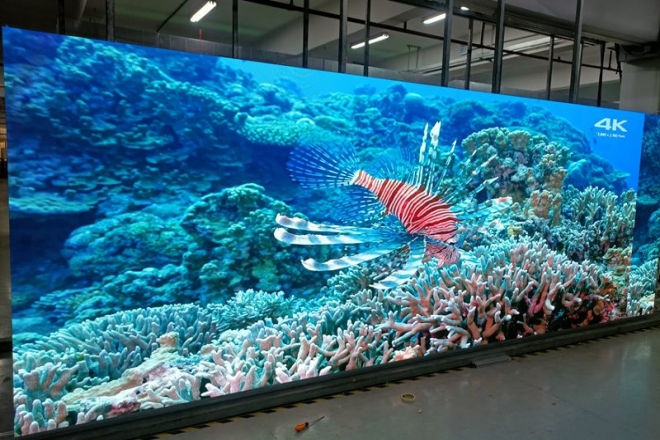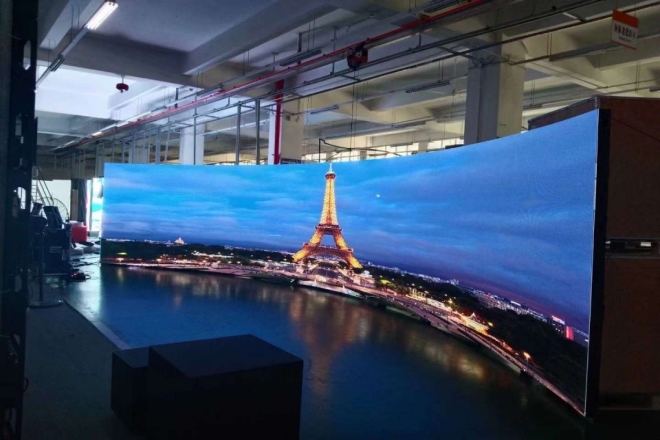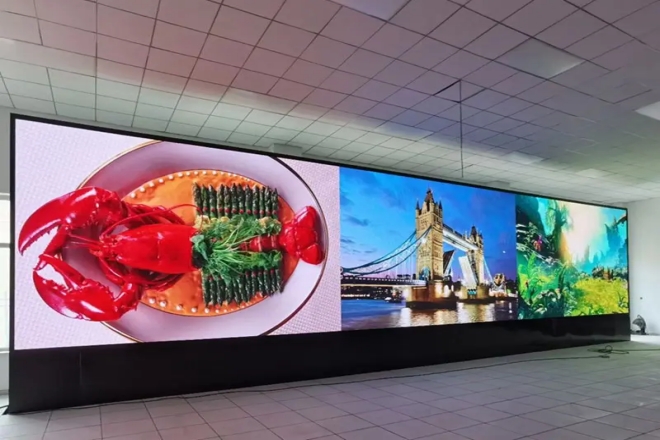介绍

在这个视觉为王的时代,高清 LED显示屏 已经成为传递信息、展现创意的重要舞台,但你是否曾在那些令人惊艳的显示屏前驻足,渴望画面更加细腻、色彩更加饱和?
本文直入核心,为大家揭秘如何让高清LED显示屏实现质的飞跃,不仅解析背后的技术秘密,还提供了切实可行的改进策略。
无论您是行业专家、技术爱好者,还是寻求创新解决方案的决策者,本文都能给您带来前所未有的启发和收获,让您的LED显示屏项目脱颖而出,引领视觉显示新潮流。
1、简单了解高清LED显示屏基本概念
1).什么是高清LED显示屏?
高清LED显示屏就像是一块超大、超清晰的电子屏幕,上面有很多小灯(LED灯),可以发出不同颜色的光,通过控制这些灯,我们就可以在上面看到各种图片、视频、文字,而且看上去非常清晰。
1.1).影响显示效果的关键参数
- 解决:
分辨率就好比是屏幕的精细程度,分辨率越高,屏幕上的“小格子”就越多,画质就越精细,能看到的细节就越多。
该参数指的是屏幕上两个相邻“小网格”之间的距离,PPI越小,“小网格”越密集,画面看起来越平滑,颗粒感越弱。
- 对比:
对比度就像是图片中光与暗之间的对比。对比度越高,图片最亮和最暗部分之间的差异就越大,图片看起来就越清晰,色彩也就越鲜艳。
- 色彩深度:
色深决定了屏幕能够显示多少种颜色,色深越高,屏幕上显示的色彩越丰富,过渡越自然,看起来更像现实世界。
2).高清LED与传统LED的区别
- 详细表达:
高清LED显示屏可以展现更多的细节,就像用放大镜看画一样,可以看到更多的小细节。传统LED可能会显得有些“粗糙”。
- 色彩再现:
高清LED显示屏的色彩更加真实、丰富,就如同你用手机拍照一样,高像素的手机可以拍出更接近真实世界色彩的照片。
- 观看舒适度:
因为高清LED显示屏的画面更加清晰,色彩更加自然,长时间观看眼睛也不会感到疲劳,而传统LED由于画面不够细腻或者色彩不够自然,长时间观看眼睛可能会感到不舒服。
2、高清LED显示屏面临哪些技术挑战?

1). 平衡 亮度 和对比
问题:想象一下,如果屏幕太亮,就像您在阳光下看手机一样,颜色可能会变得不那么鲜艳,甚至有点扭曲。但我们需要屏幕足够亮,以便在户外或光线强的地方看得清楚。
解决方案:工程师会想办法调整屏幕上的小灯(LED),使其发出足够的光,同时保持色彩准确。他们还会设计特殊的东西,如滤光片或镜头,以帮助更好地分配光线,使屏幕看起来更清晰。
2). 可视角度 局限性
问题:当你站在屏幕正前方观看时,一切都很完美。但如果你稍微将身体转向一侧,你可能会发现屏幕变暗,颜色也发生了变化。这就是视角限制。
解决方案:工程师将改进屏幕上小灯的排列方式,让它们发出的光线在更广的角度下也能保持均匀明亮。这样一来,无论从哪个角度观看屏幕,都能获得良好的观看体验。
3). 像素间距缩小带来的挑战
问题:为了让屏幕更清晰,我们需要把屏幕上的小格子(像素)做得更小。但这就像用更小的积木来盖房子,难度会大大增加。
成本与技术难度:像素尺寸越小,意味着制造工艺越复杂,材料越昂贵。同时,控制这么多小像素协同工作,也需要更强大的技术和设备。
解决方案:工程师们正在研究新技术,例如 Micro LED 和 Mini LED,它们可以在保持高性能的同时使像素更小。虽然这些技术现在仍然很昂贵,但随着时间的推移,成本将逐渐下降。
4). 图像处理与传输
问题:高清视频需要大量的数据来支撑,就像一部高清电影的文件大小比一部普通电影要大很多。那么如何快速准确地处理和传输这些数据是一个大问题。
解决方案:工程师将开发更强大的芯片和软件来处理这些数据,以便实时显示在屏幕上。同时,他们还将使用更高效的传输技术,例如更快的网络连接和更先进的压缩算法,以减少数据传输所需的时间和带宽。
3、提高高清LED显示屏显示效果的方法有哪些?

1). 采用更先进的显示技术
- Mini LED与Micro LED:
就像是用更小的画笔来画画,可以画出更细致、更清晰的画作;Mini LED、Micro LED就像非常小的LED灯,可以让屏幕显示的色彩更加鲜艳丰富,画面更加细腻无颗粒感。
- 量子点技术:
就像给色彩加了一层“超级滤镜”,让画面上的色彩显得更加饱满、真实,仿佛看到的是一片真正的花海,而不是一幅画。
2). 优化内部控制及流程
- 高级图像处理:
就好比用高级相机拍摄一张照片,再用专业软件进行修图,图像处理算法就像专业软件一样,可以让画面更加清晰,色彩更加准确,就像是经过精心处理的照片一样。
- 高性能驱动IC:
这就好比给每颗LED灯都配备了一个智能“小管家”,保证它们都能按要求发光,不会乱来。这样一来,整个屏幕的画面就会更加均匀,不会出现暗角、色彩偏差等现象。
3). 设计更好的屏幕结构
- 模块化设计:
就像拼图一样,屏幕可以分割成很多小块。这样,如果一块坏了,或者想换个风格,可以直接换掉那一块,而不用换整块。而且拼接后的屏幕之间的缝隙会更小,看起来更完整。
- 弧形及异形设计:
就像屏幕可以“变形”一样,屏幕可以根据场地或需求做成各种形状。例如弧形、圆形,甚至是各种不规则的形状。这样,观众在观看时,会更有沉浸感,仿佛进入了另一个世界。
4).适应不同的环境
- 智能亮度调节:
屏幕就像长了“眼睛”,可以感知周围光线的强度,然后自动调节亮度,让画面看起来最舒服,这样,无论白天还是夜晚,都能看得清清楚楚,不会刺眼。
- 冷却系统优化:
就像给屏幕装了一台“空调”,保证它不“发热”。因为屏幕工作时会产生热量,如果热量过多,就会影响显示效果。所以优化散热系统就是为了给屏幕降温,让它时刻保持最佳工作状态。
4、BIBILED高清LED显示屏案例分享
结论
综上所述,让高清LED显示屏更加高清,是一个多方面技术优化和创新的过程。
从采用先进的显示技术到优化显示驱动及控制系统再到加强环境适应性,每一个环节都至关重要。同时,我们也要看到,随着技术的不断进步,市场的不断变化,高清LED显示屏的定义也将不断被刷新。
因此作为从业者,我们要保持敏锐的洞察力,跟上技术发展的步伐,不断探索新的可能性。
最后,如果你想了解更多关于LED显示屏的信息, 请与我们联系。
